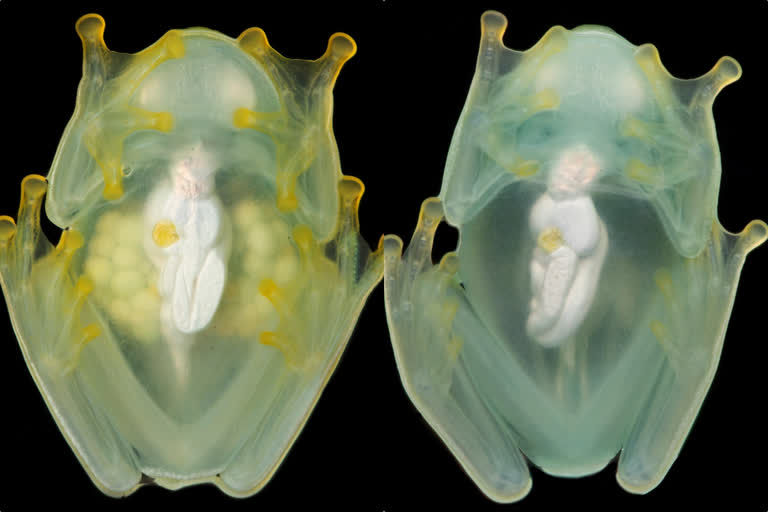Washington: Scientists have finally unravelled the mystery behind a glassfrog's ability to turn transparent while they rest, according to a new study. According to the study, a team of biologists and biomedical engineers has shown that glassfrogs achieve transparency while resting by taking red blood cells from circulation and concealing them in their livers. The findings have been published in the journal Science.
It is easy to miss a glassfrog in its natural environment. The northern glassfrog, Hyalinobatrachium fleischmanni, measures no more than a few centimeters, and they are most active at night, when their green skin helps them blend in with the surrounding leaves and foliage. But these amphibians become true masters of camouflage during the day when they're asleep.
"When glassfrogs are resting, their muscles and skin become transparent, and their bones, eyes and internal organs are all that's visible," said Carlos Taboada, co-first author of the paper. "These frogs sleep on the bottoms of large leaves, and when they're transparent, they can perfectly match the colours of the vegetation," said Taboada.
Glassfrogs are some of the only land-based vertebrates that can achieve transparency, which has made them a target for study. One reason transparency is so difficult to achieve is because of red blood cells in the circulatory system, the study said. Red blood cells are adept at absorbing green light, which is the colour of light usually reflected by plants and other vegetation. In return, these oxygen-rich cells reflect red light, making blood - and by extension the circulatory system - highly visible, especially against a bright green leaf, the study said.
Taboada's team observed that red blood cells seemed to be disappearing from the circulating blood whenever the frogs became transparent. They conducted additional imaging tests on the animals, proving via optical models that the animals were able to achieve transparency because they were pushing red blood cells out of their vessels. Taboada suspected that the cells were being stored in one of the frog's inner organs which are packaged in a reflective membrane, the study said.
"If these frogs are awake, stressed or under anaesthesia their circulatory system is full of red blood cells and they are opaque," explained Jesse Delia, co-author of the study. "The only way to study transparency is if these animals are happily asleep, which is difficult to achieve in a research lab," said Delia.
